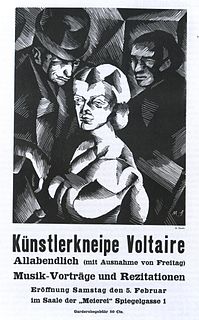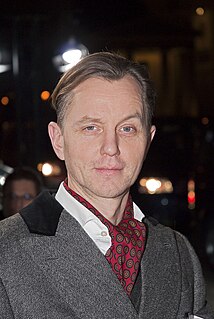Jan Theiler, alias Pastor Leumund, born 1967, Germany. In the 1990s he was an influential curator, performance artist and musician on the underground scene organising large-scale music and performance events at various venues in East-Berlin including the Duncker14, K77, Prater, Kule, Kunsthaus Tacheles and many more.
In 1997 he took part in the Labyrinth festival, in the Torpedo Hallen, Copenhagen. In 1999 he exhibited at the Rich and Famous gallery, London.
He was one of a number of artists including Mark Divo, the Mikry Drei, Lennie Lee and Dan Jones to have squatted the Cabaret Voltaire (Zürich) in the February 2002 in an attempt to revive the Dada movement.
He became well known in Zurich as a spokesman for the neo-dadaists. He curated the second (Sihlpapier 2003), third (Toilethouses 2004) and fourth (Pornokino 2005) Dada festival together with Mark Divo in Zurich.
In 2005 he was included in the Real Biennale at the Kinsky Palace, Prague in the summer of 2005.
In 2005 he also attempted to set up a political party known as the berg party during the struggle for the Palast der Republik. In 2011, the Party merged with the squatters party, becoming Bergpartei, die "ÜberPartei". Jan Theiler remaines chairman of the party.

Dada or Dadaism was an art movement of the European avant-garde in the early 20th century, with early centres in Zürich, Switzerland, at the Cabaret Voltaire. New York Dada began c. 1915, and after 1920 Dada flourished in Paris. Dadaist activities lasted until c. the mid 1920s.

Tristan Tzara was a Romanian and French avant-garde poet, essayist and performance artist. Also active as a journalist, playwright, literary and art critic, composer and film director, he was known best for being one of the founders and central figures of the anti-establishment Dada movement. Under the influence of Adrian Maniu, the adolescent Tzara became interested in Symbolism and co-founded the magazine Simbolul with Ion Vinea and painter Marcel Janco. During World War I, after briefly collaborating on Vinea's Chemarea, he joined Janco in Switzerland. There, Tzara's shows at the Cabaret Voltaire and Zunfthaus zur Waag, as well as his poetry and art manifestos, became a main feature of early Dadaism. His work represented Dada's nihilistic side, in contrast with the more moderate approach favored by Hugo Ball.
Industrial music is a genre of music that draws on harsh, transgressive or provocative sounds and themes. AllMusic defines industrial music as the "most abrasive and aggressive fusion of rock and electronic music" that was "initially a blend of avant-garde electronics experiments and punk provocation". The term was coined in the mid-1970s with the founding of Industrial Records by members of Throbbing Gristle and Monte Cazazza. While the genre name originated with Throbbing Gristle's emergence in the United Kingdom, concentrations of artists and labels vital to the genre also emerged in the United States, mainly Lou Reed's Metal Machine Music.

Hugo Ball was a German author, poet, and essentially the founder of the Dada movement in European art in Zürich in 1916. Among other accomplishments, he was a pioneer in the development of sound poetry.

Cabaret Voltaire are an English music group formed in Sheffield in 1973 and initially composed of Stephen Mallinder, Richard H. Kirk, and Chris Watson. The group was named after the Cabaret Voltaire, the Zürich nightclub that served as a centre for the early Dada movement.

Cabaret Voltaire was the name of an artistic nightclub in Zürich, Switzerland. It was founded by Hugo Ball, with his companion Emmy Hennings, in the back room of Holländische Meierei, Spiegelgasse 1, on February 5, 1916, as a cabaret for artistic and political purposes. Other founding members were Marcel Janco, Richard Huelsenbeck, Tristan Tzara, and Sophie Taeuber-Arp and Jean Arp.

Mark Divo is a Luxembourgeois conceptual artist and curator who organises large scale interactive art projects incorporating the work of a number of well-known underground artists. His own work involves painting, performance, photography, inhabited sculpture and installation.
Since the beginning of Dadaism in the Cabaret Voltaire, Zurich in 1916, many artists have experimented with extreme performance art as a critique of contemporary consumer culture. Some have used bodily fluids such as blood, faeces and urine. Other times they perform self-mutilation. Simulated (artificial) blood has also been used. In the 1960s and 1970s extreme performance was elevated to a movement with the Viennese actionists. In recent times there has been a resurgence in extreme performance as a response to the increasing alienation some artists feel in the face of today's technological advances.

Emmy Hennings was a performer and poet. She was also the wife of celebrated Dadaist Hugo Ball.

Max Raabe is a German folk singer. He is best known as the founder and leader of the Palast Orchester.

Zang Tumb Tumb is a sound poem and concrete poem written by Filippo Tommaso Marinetti, an Italian futurist. It appeared in excerpts in journals between 1912 and 1914, when it was published as an artist's book in Milan. It is an account of the Battle of Adrianople, which he witnessed as a reporter for L'Intransigeant. The poem uses Parole in libertà and other poetic impressions of the events of the battle, including the sounds of gunfire and explosions. The work is now seen as a seminal work of modernist art, and an enormous influence on the emerging culture of European avant-garde print.
"[The] masterpiece of Words-in-freedom and of Marinetti’s literary career was the novel Zang Tumb Tuuum... the story of the siege by the Bulgarians of Turkish Adrianople in the Balkan War, which Marinetti had witnessed as a war reporter. The dynamic rhythms and onomatopoetic possibilities that the new form offered were made even more effective through the revolutionary use of different typefaces, forms and graphic arrangements and sizes that became a distinctive part of Futurism. In Zang Tumb Tuuum; they are used to express an extraordinary range of different moods and speeds, quite apart from the noise and chaos of battle.... Audiences in London, Berlin and Rome alike were bowled over by the tongue-twisting vitality with which Marinetti declaimed Zang Tumb Tuuum. As an extended sound poem it stands as one of the monuments of experimental literature, its telegraphic barrage of nouns, colours, exclamations and directions pouring out in the screeching of trains, the rat-a-tat-tat of gunfire, and the clatter of telegraphic messages" Caroline Tisdall and Angelo Bozzola

Sophie Henriette Gertrud Taeuber-Arp was a Swiss artist, painter, sculptor, textile designer, furniture and interior designer, architect, and dancer.
Events from the year 1916 in art.

Viking Eggeling was a Swedish avant-garde artist and filmmaker connected to dadaism, Constructivism, and abstract art and was one of the pioneers in absolute film and visual music. His 1924 film Diagonal-Symphonie is one of the seminal abstract films in the history of experimental cinema.
Lennie Lee is a South African conceptual artist who lives and works in London.

Ingo Giezendanner is a painter and installation artist and member of the Kroesos Foundation. He lives and works in Zürich, Switzerland.
The Kroesos Foundation is an artistic collective set up by Luxemburgese Artist Mark Divo. Between January and March 2002 they occupied the building in the centre of Zurich where the original European Dada movement began, as a response to the horrors of the first World War, which came to be known as the Cabaret Voltaire. The collective organised a number of events/ performances over a period of three months until they were forced to leave the building. In spite of their eviction they managed to have the building turned into a museum. Members of the collective, apart from Divo, include Aiana Calugar, Dan Jones, Lennie Lee, ingo giezendanner and Pastor Leumund Cult. Throughout the winter of 2002 they were described as neo-Dadaists by the Swiss and international press. The group have exhibited in a number of international exhibitions including the real Biennale at the Kinsky Palace in Prague.

The Edge Festival was an annual music festival held in Edinburgh, Scotland, during August of each year. Formerly known as T on the Fringe, The Edge was part of the Edinburgh Festival Fringe, the world's largest arts fringe festival. Unlike other music festivals, The Edge did not take place at one location, with performers instead playing numerous venues across the city during the month. The festival was founded under the T on the Fringe name by DF Concerts and Tennent's Lager, with DF continuing to promote the festival after the departure of Tennent's from 2008 until 2012.

Electroboy is a Swiss model, author, conceptioner, graphic designer, electronic musician and music producer. He lives in Berlin. Electroboy produces electronic trash-pop and electroclash with simple, cheeky content based on a dadaistic philosophy. He also creates series of vector graphics to call up for more consumer responsibility and to promote a vegan lifestyle.

Dada was an artistic and cultural movement between the years 1913 and 1923. Usually considered to have been instigated by Marcel Duchamp's Fountain exhibited at the first exhibition of the Society of Independent Artists in 1917, and becoming a movement at the Cabaret Voltaire in February, 1916, in Zürich, the Dadaism as a loose network of artists spread across Europe and other countries, with New York becoming the primary center of Dada in the United States. The very word Dada is notoriously difficult to define and its origins are disputed, particularly amongst the Dadaists themselves.














